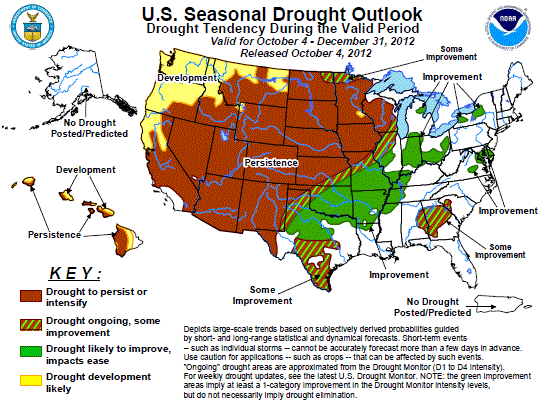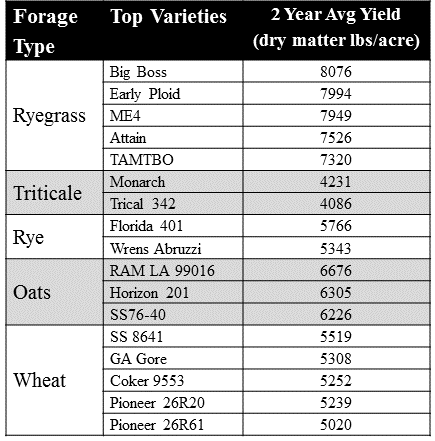The latest long range forecast from NOAA is encouraging with at least average rainfall this winter.
Livestock feed prices have risen sharply due to the drought reduced corn crop in the Midwest. What had been fairly reasonable by-product feeds several years ago, have risen to the point that many ranchers are strongly considering increasing the acreage of cool season forages for winter cattle feeding this year. This week the Alabama Market News Service reported that bulk corn gluten feed was trading at $255-280 per ton, soybean hulls were $215-220 per ton, and whole cottonseed was $255-280 per ton. But, these price quotes do not include the freight to have them hauled to the farm.
Many areas of the Panhandle saw a dramatic increase in rainfall through the summer, so soil moisture levels in most areas are high enough for getting cool season forages established. The latest long range forecast from NOAA is also encouraging for at least average rainfall this winter.
All of these factors suggest that it may be a good year to invest in cool season forages, to grow your own feed and let the livestock do the harvesting and hauling. If you are going to invest in winter forages, you want to select the varieties that have the best disease resistance and highest yield potential. Below are the varieties that performed best over the last two years for Dr. Ann Blount at the North Florida Research and Education Center near Marianna.
Winter forage variety test results from UF/IFAS NFREC Marianna.
 0
0


